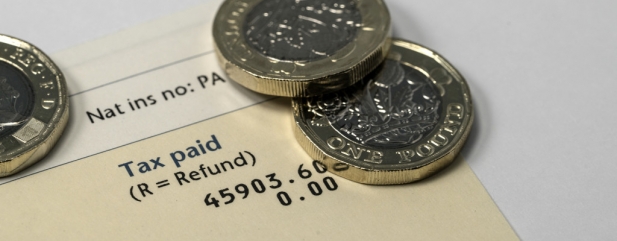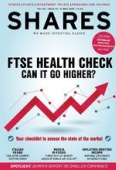Archived article
Please note that tax, investment, pension and ISA rules can change and the information and any views contained in this article may now be inaccurate.
Pension tips for the self-employed

Building up a decent-sized pension pot can be a lot more challenging if you’re self-employed as oppose to employed.
Employed people not only get a nudge to save into a pension through auto-enrolment, they also benefit from employer-matched pension contributions.
If you’re self-employed, you’re essentially on your own. And if you do nothing, you might have to rely solely on the state pension, which currently pays a maximum of just £164.95 a week.
It’s not all doom and gloom though. Pensions are a lot more flexible than they were in the past, which means it’s easier to build up a nest egg in the way that best suits your individual circumstances.
WHERE DO I START?
There are lots of different schemes you could opt for if you’re self-employed and saving for retirement.
The main pension providers, like Aviva and Standard Life, offer personal pensions which let you invest into a range of funds that suit your retirement goals and attitude to risk.
Other providers include PensionBee, which helps people to locate and transfer pensions into one place. You can then invest them into one of three plans: a low-cost global tracker, a managed fund, and a ‘green’ fund.
The government scheme NEST (National Employment Savings Trust) is also open to self-employed people, but it’s more expensive and offers less choice than other pensions.
A self-invested personal pension (SIPP) offers the most investment choice and flexibility. You can open one up within minutes via an investment platform.
‘SIPPs are good option if you want control over how you invest your money. They allow you to invest in a wide variety of stocks, bonds and funds at low-cost,’ explains Tom Selby, senior analyst at AJ Bell.
‘Different SIPPs offer different levels of choice and service, and charge you different amounts, so it’s worth shopping around providers to make sure you get the best possible deal.’
Even if you don’t want to pick investments, that doesn’t preclude you from opening a SIPP.
Several SIPP providers offer ‘model portfolios’ – baskets of investments designed to meet your appetite for risk.
AJ Bell, for example, offers five funds ranging from ‘Cautious’ to ‘Adventurous’ with charges capped at 0.5%.
‘What really matters, though, is not how you invest your pension pot, but contributing as much as you possibly can to build a large pot of money for later life,’ says Martin Bamford, managing director at Informed Choice.
HOW MUCH DO I NEED TO SAVE?
If you don’t receive employer contributions, you’ll typically need to save more into a pension than your employed peers do.
According to AJ Bell, if someone earning £30,000 a year is auto-enrolled at the minimum level, their £959 of personal contributions over the year will be increased to £1,918 through a combination of the 3% employer match (£719) and tax relief (£240).
If they’re self-employed, the same contribution will only be boosted by tax relief to £1,199.
But it’s still important to ensure your pension contributions are affordable.
‘Any savings made will not be accessible until at least 10 years before state pension age from a personal arrangement and a refund of contributions won’t generally be given before that,’ warns Matthew Coppin, manager, financial advice at Castlefield Advisory Partners.
‘So it is crucial that this forms part of a well-organised overall savings plan with other more liquid and available assets being there if needed in the short term – perhaps bank deposits or cash ISAs.’
HOW CAN I BALANCE REGULAR SAVING WITH A FLUCTUATING INCOME?
Saving money every month might be difficult if you’ve got a fluctuating income.
Coppin suggests working out your average earnings and then generating a savings budget from that.
If you haven’t been self-employed for long enough to know your average income, you could make contributions in bulk or top up your savings towards the end of the tax year.
Selby recommends saving a percentage of the income you get rather than a fixed amount.
‘So, for example, if you set yourself a target of saving 10% of whatever you earn each month, you’ll automatically reduce saving during lean months and increase saving during better months,’ he explains. ‘By doing this, you can save for tomorrow while ensuring you don’t end up cash-strapped today.’
If you’re really stretched, it’s worth realising that saving just small amounts of money is worth it in the long run.
‘Regular long term savings will build up over time and make the task of saving enough to fund your retirement much easier to swallow,’ says Fiona Tait, technical director at Intelligent Pensions.
‘You can then top up your savings with a lump sum at the end of your business year when you know what your profits are likely to be.’
HOW DO I BOOST MY CHANCES OF A COMFORTABLE RETIREMENT?
The best thing you can do is start saving as much as you can afford as soon as possible.
‘The longer your pension contributions are invested, the more they can benefit from compounded investment returns,’ explains Bamford.
It’s also worth focusing on your end goal to ensure you don’t end up spending your money rather than saving it.
‘If you want to have a comfortable old age, and be able to choose when and how you spend your savings, then you must save now,’ Tait says.
Don’t forget to review your pension, investment selection and contribution levels at least once a year to make sure they’re still appropriate.
Important information:
These articles are provided by Shares magazine which is published by AJ Bell Media, a part of AJ Bell. Shares is not written by AJ Bell.
Shares is provided for your general information and use and is not a personal recommendation to invest. It is not intended to be relied upon by you in making or not making any investment decisions. The investments referred to in these articles will not be suitable for all investors. If in doubt please seek appropriate independent financial advice.
Investors acting on the information in these articles do so at their own risk and AJ Bell Media and its staff do not accept liability for losses suffered by investors as a result of their investment decisions.

 magazine
magazine








